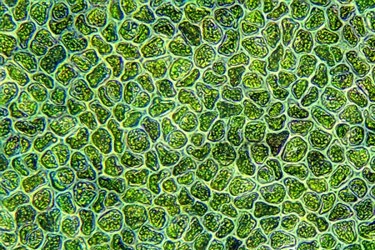How Lumen Is Putting The "Farm" In Biopharma

By Tyler Menichiello, Chief Editor, Bioprocess Online

Biopharmaceuticals are changing the paradigm of disease and treatment. And while they stand as testaments to human ingenuity and scientific discovery, they’re onerous to develop, manufacture, and commercialize. Not to mention that the high cost of bringing these therapies to market is often reflected in the product pricing, which can make them inaccessible to patients. To offset these costs, small- to mid-size biotechs are devising creative ways to reduce their COGs and mitigate the risk of therapies failing in the clinic.
Lumen Bioscience has found a unique way to do just that: by going all the way upstream and ditching traditional cell lines like CHO in favor of using Spirulina, a photosynthetic cyanobacterium, as a producer cell line (PCL) for its pipeline of oral biologics.

Adapting Lessons From Biofuels
Behnke has had quite an interesting career. He worked in Big Pharma for a number of years before pivoting and spending a decade working in biofuels. And while biofuels may have fallen short as an alternative to fossil fuels, the industry helped advance the technology for using algae as a production workhorse.
“This biofuels thing, we all knew that it was a long shot because you’re competing with traditional oil production, which is the largest and cheapest industry in the entire world,” Behnke tells me. Despite the uphill battle, the good folks working in biofuels put “an enormous amount of effort” into the technology required to make oil from photosynthetic organisms.
“Unfortunately, it didn’t advance it to the point where it’s cheaper than fracked oil,” Behnke says, but significant progress was made maturing the underlying technology.
“At the end of any campaign like that, where people develop a lot of interesting ideas and diverse approaches to doing different things, it’s worthwhile to look at those technologies and say, okay, that may not have worked, but is there something really cool and economically beneficial that we could use those tools for?”
Inherent Scalability And Production Efficiency
That question ultimately led to the formation of Lumen and its novel biomanufacturing process that more closely resembles an industrial farming operation than any traditional mAb process. Functionally, Spirulina behaves like a plant, Behnke says. “You shine a light on it, and you harvest it,” he explains. Instead of adding sugar and nutrients to the medium, as you would in a mammalian cell line, Lumen’s bioreactors run on water, light, and fertilizer.
While the bioengineering side of the operation draws from Behnke’s time in biofuels, the company’s scalable production methods can trace its roots to the algae’s long-standing use in the food industry. “People have been growing Spirulina in controlled systems since the 1970s,” he explains, as a nutrient supplement and natural blue food coloring.
Of course, manufacturing biologics comes with heavier regulatory scrutiny than making food products. Lumen had to take the translatable parts from these established processes and reconfigure them to be GMP compliant, Behnke tells me. The company built out its own continuous — or more accurately, semi-continuous — process in-house, since there weren’t any CDMOs experienced in using algal cell lines.
Unlike traditional mammalian cell lines, Spirulina is inherently scalable. The ease and speed at which Spirulina grows makes it easy to maintain large-scale cultures, and the organism is genetically very stable. “It’s a prokaryote that only grows and divides vegetatively,” Behnke explains. This means that Lumen doesn’t have to contend with generational issues like genetic drift and replicative senescence that are common in mammalian cell lines. In fact, the company has been able to maintain the same Spirulina strains in continuous liquid culture for several years now, according to Behnke.
Spirulina is also a protein powerhouse. Not only is it about 60% protein by dry weight, but it can accumulate “up to double-digit percentages of transgenic protein inside of itself, which is an enormous amount,” Behnke tells me. This protein is also soluble, which reduces the burden on downstream processing. “It doesn’t make inclusion bodies,” Behnke explains. “It just stashes away the protein.”
(For more on Lumen’s process development and the story behind its Spirulina platform, check out our previous editorial featuring Behnke and Lumen’s CEO and co-founder, Brian Finrow.)
Cutting Costs By Cutting Cleanrooms
Any upstream scientist will tell you that maintaining a sterile, aseptic system is not for the faint of heart. It’s a constant (and expensive) battle against the opportunistic microbes that want nothing more than to feed and grow to the peril of your PCL.
“CHO cell media is the yummiest bacteria food that anybody ever made,” Behnke says. “If you get one bacteria cell in a CHO cell culture, you’re done.”
Luckily, Lumen doesn’t have to worry about those pesky microbes. “The Spirulina process is clean, but it is not sterile,” Behnke explains. Because Spirulina feeds on sunlight instead of sugar, there is nothing in the media for bacteria and fungi to feed on.
“We do not operate a classified cleanroom at all at Lumen,” Behnke tells me, with the exception of its final fill-finish steps. As a result, the company doesn’t have to deal with the extreme overhead costs of running a completely sterile process.
Without having to maintain a sterile process, Lumen significantly reduces its COGs. What’s more, its oral biologic is shelf-stable at room temperature, which makes it readily accessible for patients in parts of the world where cold chain infrastructure is absent or lacking. This product stability, combined with the markedly reduced cost of manufacturing, supports Lumen’s mission to democratize biologics.
To listen to my full conversation with Dr. Behnke, check out episode one of Better Biopharma. Stay tuned for new episodes, released every other Wednesday, to hear more about what leaders across the space are doing to move the industry forward.
